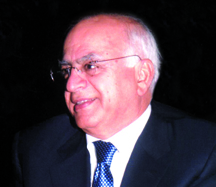We and the evolution – III
there is reason for the increase and multiplication of the numbers of human groups and their solidarity to increase their ability to defend themselves against various risks. what is the natural solution to enable the human fetus with its large brain to pass through the birth canal, which became narrow as a result of walking on legs? the solution is that the human embryo is born prematurely, much earlier than the rest of the embryos. if the fetus was born with the potential of the fetus itself, the sheep or the horse, it would have been able to stand on its feet within minutes of birth and start to live normally, but this would have required the continuation of human pregnancy for three or four years! this is an example of the balanced and non-ideal solutions produced by the natural selection process. as a result, the human child is born within nine months but needs full care for years, and support for the mother for a longer period, compared to the rest of the animals. another consequence of the baby’s early birth, as we have seen, is the need for the mother to care for the child, and to provide food and water for them. this is not the case for the rest of the babies (but they are available in fairly similar forms to some birds). hence, human characteristics have emerged in the development of long-term relationships between the sexes that may last for years or even the life span that forms the psychological biological basis of marriage. marriage is also a human phenomenon that is available in various human societies, since women in primitive human society have not been able to provide themselves and their children with the necessary care and protection without the assistance of another spouse. walking on two legs resulted in common back pain, joint problems, hip joints and knees in a large segment of people of both sexes, because the human skeleton was modified from walking on four to walking on two legs. we also found that many have problems with the teeth of the mind, has been shrinking during the last two millennia by the discovery of fire and the practice of cooking, which reduced the need for man to chew his food. but the number of teeth has not changed and remained the same, so there is not enough room for many to grow the teeth of the mind, and this often requires surgical intervention. we also found that people suffer from retinal problems that are very prone to separation and loss of sight. other problems include the design of the trachea in humans and the risk of suffocation. there has been a decline in the level of human throat during the last two million years to form an acoustic chamber consisting of the pharynx, mouth and nasal cavity, and this enables the human to use his voice to speak and sing. but this same property makes him vulnerable, because anything he swallows passes over the trachea which could expose him to suffocation. the opposite of the rest of the primate cannot breathe and swallow at the same time because of this characteristic. many complain of the immune system disorder, which sometimes fights the tissues of the body itself rather than defending them, causing serious diseases. in addition to program cell division, risk of cancer, appendicitis, risk of infection, and other health problems. in conclusion, since scientific evidence indicates the natural development of man by natural selection, over millions of years, it is therefore important to study and understand the composition of the human body and how it develops. the extensive scientific studies, presented in brief by the lecturer, revealed that human evolution occurred over millions of years, gradually and by purely natural factors that can be studied and understood. understanding the evolution of human body and brain will help to better understand the causes of organ disorders and may also help to detect future treatments. that’s what science says, and we may all be wrong!
e-mail: habibi.enta1@gmail. com






